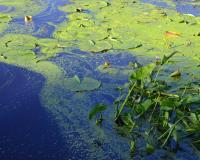
Vibrant Environment
Oceans And Coasts
All | Biodiversity | Climate Change and Sustainability | Environmental Justice | Governance and Rule of Law | Land Use and Natural Resources | Oceans and Coasts | Pollution Control

Widespread harmful algae bloom (HAB) outbreaks have profound negative impacts: threats to human health and safety, stress on ecological systems, diminished quality of life, and significant economic loss to water-based recreational and commercial activities. They occur due to decades worth of nitrogen and phosphorus nutrient runoff deposited into our freshwater lakes and water bodies. Now, excess nutrient runoff and human activity have contributed to an uncontrollable rise in HABs across the globe. This ongoing accumulation of nutrients into our shrinking freshwater supplies combined with warmer temperatures has turned these precious water bodies into petri dishes for harmful algae growth. Removing the overabundance of nutrients is essential to restoring these water bodies and preventing the growth of future HABs.
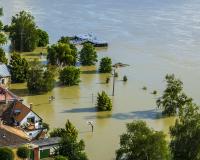
The current flooding disasters in the Midwest, as well as the flooding consequences of Hurricanes Michael, Harvey, Irma, and Maria, have damaged thousands of U.S. homes and businesses over the last decade. The National Flood Insurance Program (NFIP), enacted by Congress in 1968, aims to minimize the risk of flood damage as well as reduce flood-related disaster recovery costs. This federally backed program provides insurance to property owners and renters, establishes building and land use requirements and floodplain management practices for local communities to qualify, and maps flood-risk areas to inform development decisions and insurance premiums. But the NFIP assumes that flood risks are static and change little over time, and the effects of climate change are challenging this assumption.
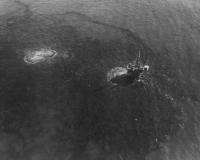
“In 1969 the signs of . . . concern were everywhere,” writes John Quarles, EPA’s first deputy administrator, in the opening chapter of his invaluable memoir Cleaning Up America. These signs “were manifest in the outcry against the Santa Barbara oil spill,” which happened on January 28, 1969, just eight days after Richard Nixon’s ascent to the White House. There followed in close order a series of epochal events every month of that year. “Suddenly, in cities across the country, citizen environmentalists campaigned. . . . People were demanding a change in the old policy toward the nation’s resources.”

On November 12th, I traveled to Mississippi for a week with fellow ELI Gulf Team members Amy Streitwieser and Sofia Yazykova. We went to attend the 2018 Mississippi Restoration Summit, hosted by the Mississippi Department of Environmental Quality (MDEQ), but also planned to use the trip as a “listening tour,” meeting with representatives of local governments and historically marginalized communities to learn more about their environmental priorities.
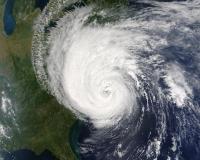
In 2017, almost eight percent of the American population was affected by natural disasters. Hurricanes Harvey, Irma, and Maria swept through Florida, Georgia, Texas, Puerto Rico, and the U.S. Virgin Islands, leading to billions of dollars of federal disaster assistance. The 2018 hurricane season was another year of devastating destruction, most recently seen in the aftermath of Hurricanes Florence and Michael in the Southeast, severely affecting the citizens of Alabama, Florida, Georgia, North Carolina, South Carolina, and Virginia. With climate change likely to amplify the impacts of hurricanes, hurricane season will continue to strain communities, infrastructure, and federal disaster programs into the future.
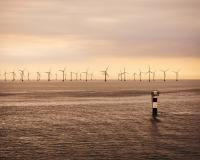
“It’s all happening,” declared a June 2018 article about offshore wind development in the United States. Indeed, the National Renewable Energy Laboratory has identified a trend toward a viable U.S. offshore wind industry that is gaining momentum. Despite this trend, it has been 17 years since the first offshore wind project was proposed, and the 30-megawatt (MW) Block Island Wind Farm is still the only operating project. Has the time finally arrived for this industry?
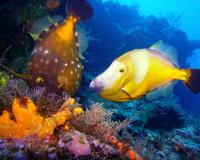
According to the World Bank, small-scale fisheries (SSF) in developing countries produce over one-half of total fish catch and employ almost 90 percent of part- and full-time fishers. Despite the subsector’s clear importance to food security and the financial sustainability of fisheries-dependent communities around the world, there are considerable gaps in both knowledge of and management strategies for small-scale fisheries. Because fishers in the SSF subsector are widely dispersed, it is difficult for governing bodies to collect data and make management decisions based on incomplete information. Given the precarious state of global fisheries, one-third of which are fished beyond biological sustainability, managing SSF despite the lack of data is a crucial component of sustainably feeding the world into the future.
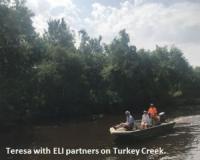
Last month, fellow ELI Gulf Team member Teresa Chan and I travelled to Mississippi to attend two public events hosted by the Deepwater Horizon natural resource damage assessment (NRDA) trustees: a community education workshop in Gulfport, and the Trustee Council’s annual public meeting in Long Beach.
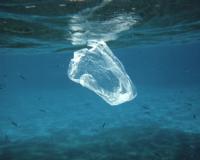
It’s official: China isn’t taking our garbage anymore. Literally. Effective this year, China started restricting the import of 24 types of waste and established new thresholds for contaminants such as food residues and metals. Why does that create a significant problem for the United States? Consider this: China imported 776,000 metric tons of reclaimed plastic and 13 million metric tons of recycled paper from the United States in 2016 alone.